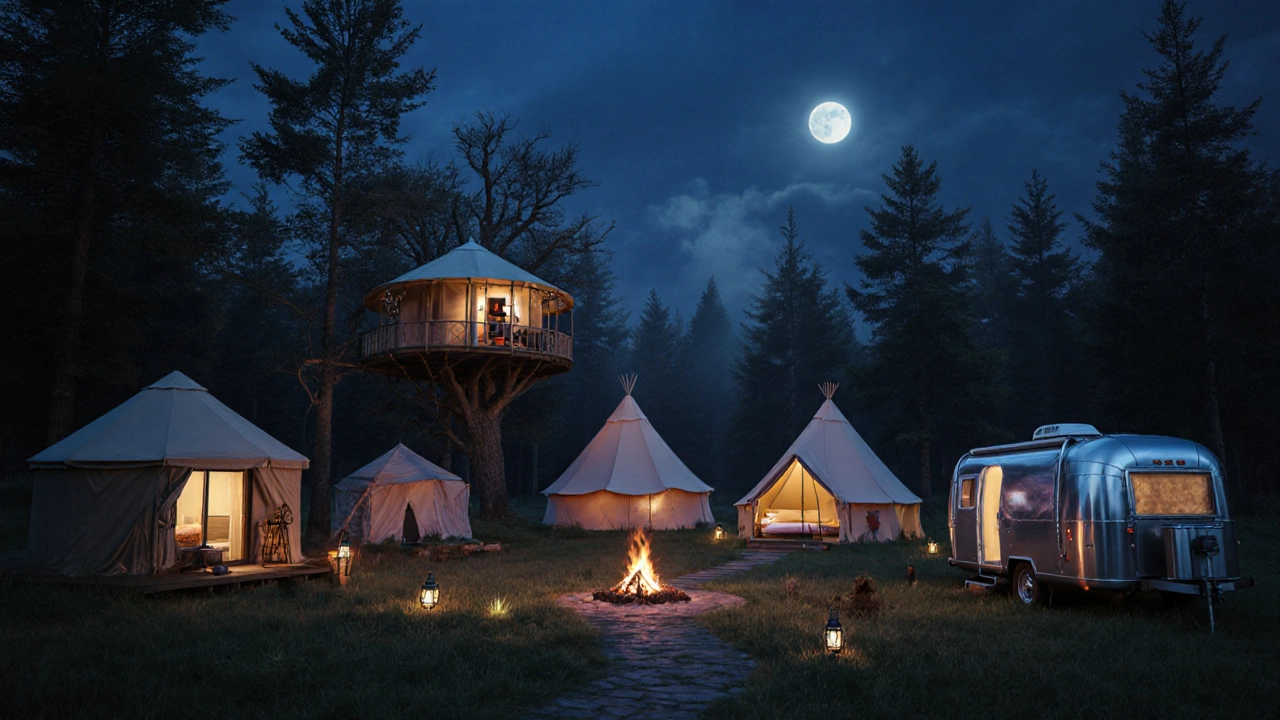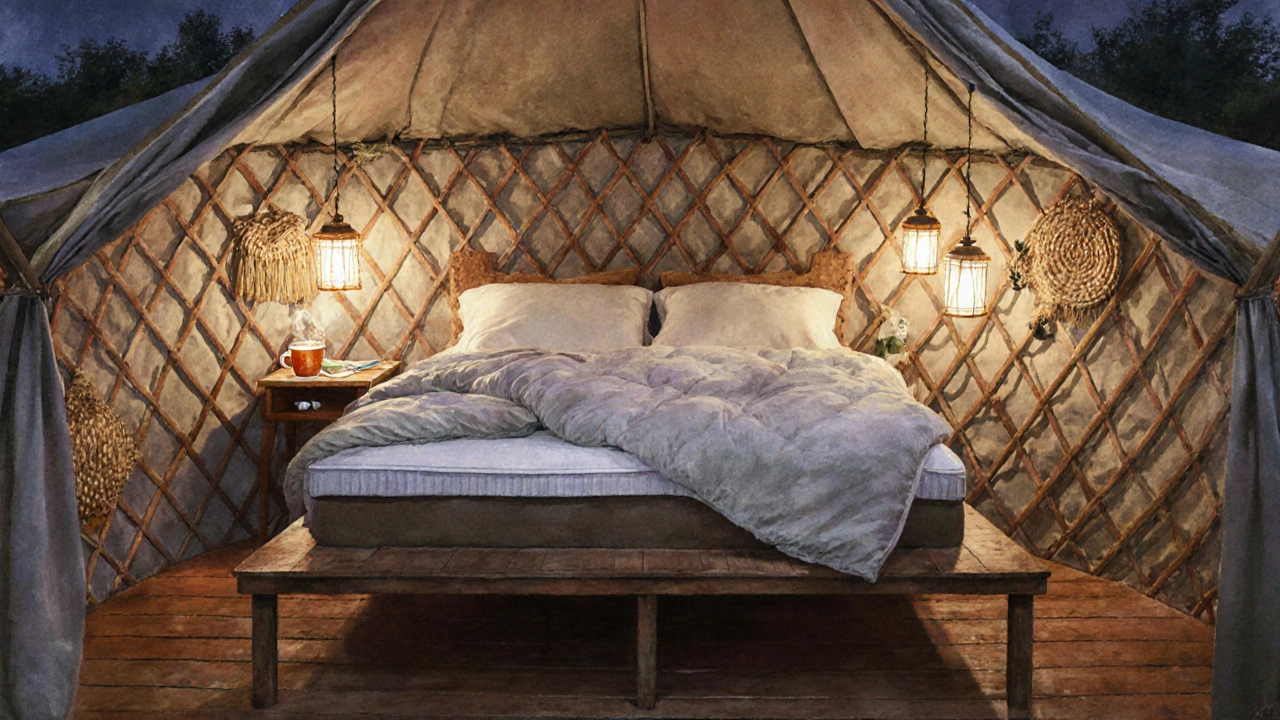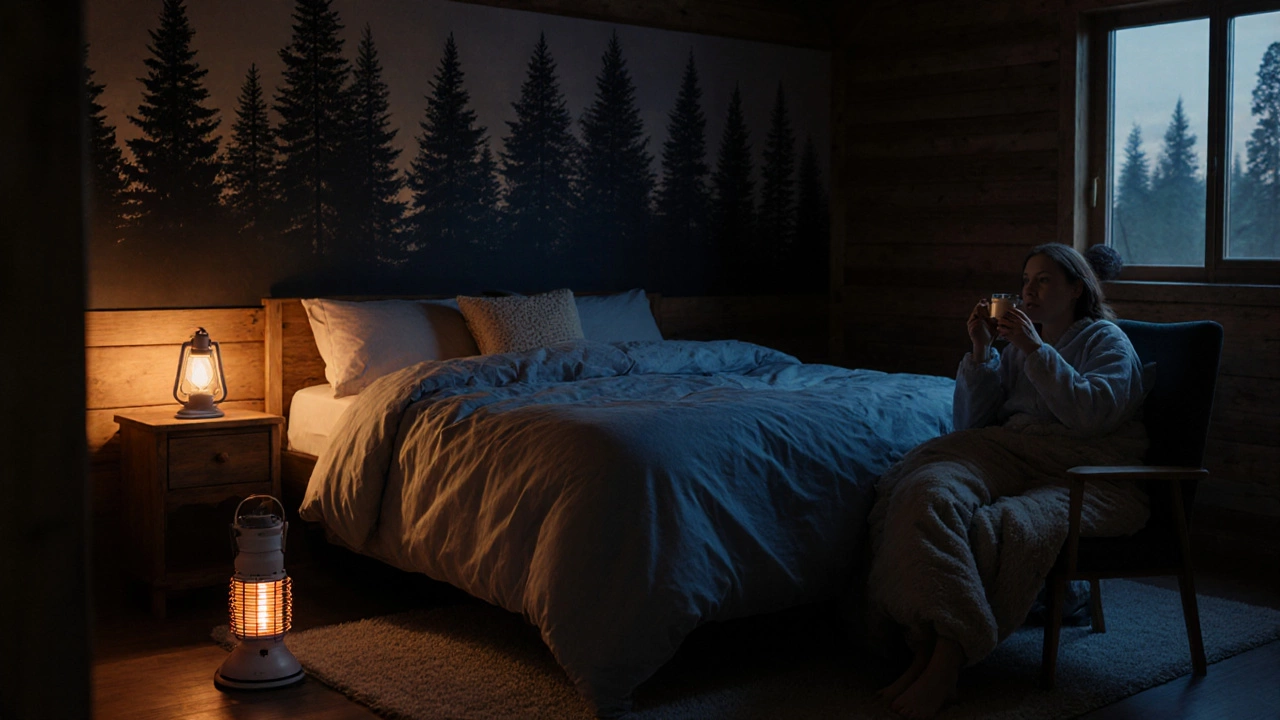Glamping Sleep Options: What You'll Actually Rest In

Glamping Sleep Options Calculator
Find your ideal glamping accommodation based on your travel season, comfort level, privacy needs, and budget. This calculator suggests the best options for a restful night under the stars.
When you book a glamping cottage is a luxury‑styled outdoor accommodation that blends camping’s natural vibe with hotel‑level comfort, the first thing you wonder is: “What do I actually sleep in?” The answer isn’t a one‑size‑fits‑all mattress; it depends on the type of shelter, the climate, and how much pampering you expect. Below we break down the most common sleeping setups you’ll find at glamping sites, how to pick the right one for you, and the little extras that turn a good night’s rest into an unforgettable experience.
Typical Glamping Sleeping Spaces
Glamping operators have gotten creative. Here are the six setups you’re most likely to encounter, each with a quick snapshot of what you’ll actually lie on.
- Yurt: A circular, canvas‑wrapped frame that often includes a raised wooden platform and a built‑in mattress. Yurts are popular in North America and Europe because they stay warm in winter and breathable in summer.
- Treehouse: Elevated cabins perched among branches. They usually feature a lofted bed or a queen‑size mattress perched on a solid deck, giving you a canopy‑level view of the forest.
- Tipi: A conical tent made from canvas or re‑sined fabric. Modern tipis often come with a plush platform and a padded mattress, plus a canvas ceiling that keeps bugs out.
- Safari Tent: A high‑top canvas structure that resembles a traveling tent from an African safari. Inside you’ll find a king‑size mattress, sometimes even a private bathroom.
- Airstream Trailer: A classic aluminum travel trailer refurbished for glamping. Most come with a queen‑size mattress, a compact kitchenette, and full bathroom facilities.
- Cabin: A small wooden structure that may range from rustic to ultra‑modern. Cabins typically include a double or queen‑size bed with a thick mattress, often topped with a duvet.
All of these options replace the traditional ground‑level sleeping bag with a proper mattress, pillows, and linens, which is the key difference between glamping and regular camping.
How to Choose the Right Sleeping Setup
Pick a sleeping space by weighing three practical factors: privacy, comfort level, and climate suitability.
- Privacy: If you’re traveling with a partner, a private cabin or Airstream gives you a locked door and a bathroom. For solo travelers who don’t mind a bit of shared air, a tipi or safari tent works well.
- Comfort level: A raised wooden platform in a yurt or treehouse often feels more “roomy” than a low‑lying canvas floor. Look for listings that mention a “memory‑foam mattress” or “luxury linens” if you want hotel‑grade softness.
- Climate suitability: In colder months, opt for a shelter with built‑in heating-many yurts have wood‑burning stoves, while Airstreams rely on electric heaters. In hot, humid areas, a canvas‑lined tipi with ventilation flaps helps keep the air circulating.
Once you match your preferences to a shelter type, the rest of the night usually falls into place.
Comfort Upgrades & Must‑Have Accessories
Even with a plush mattress, a few accessories can dramatically improve sleep quality under the stars.
- Heated sleeping bag: Perfect for chilly nights in a yurt or cabin without a built‑in heater.
- Portable electric heater: Small ceramic heaters plug into a campsite’s power source and keep a tipi or safari tent warm.
- LED lantern: Provides a soft, flicker‑free glow that helps you wind down without harsh flashlight beams.
- High‑thread‑count cotton sheets and down comforters: They add a hotel‑like touch and regulate temperature naturally.
- Noise‑reducing earplugs: Even the most insulated yurt can pick up cricket chirps on summer nights.
Almost every glamping site offers these items as add‑ons, but bringing your own guarantees the exact brand and quality you prefer.

Seasonal Considerations: Staying Cozy Year‑Round
Glamping isn’t limited to summer. The right shelter and gear let you sleep comfortably in any season.
- Winter: Choose a yurt with a wood stove, or an Airstream equipped with a built‑in furnace. Pair it with a heated sleeping bag and thermal leggings.
- Spring/Autumn: A tipi or safari tent with breathable canvas works well. A lightweight electric heater or a hot water bottle can bridge temperature dips.
- Summer: Look for shelters that have mesh windows and ceiling fans. A linen sheet set and a portable misting fan keep the night air fresh.
Pay attention to the site’s weather policy-some glamping farms close certain cabins during extreme cold or heavy rain, while others keep all options open with extra heating.
Budget vs. Luxury: Cost‑to‑Comfort Comparison
Below is a quick snapshot of typical nightly rates, comfort scores (1‑5), and key amenities for each sleeping option. Prices are U.S. averages for 2025 and can vary by region.
| Option | Avg. Nightly Rate (USD) | Comfort Score | Heating | Private Bathroom |
|---|---|---|---|---|
| Yurt | 150‑200 | 4 | Wood stove or electric heater | Often shared |
| Treehouse | 180‑250 | 4.5 | Electric heater | Usually private |
| Tipi | 120‑170 | 3.5 | Portable heater | Shared |
| Safari Tent | 200‑300 | 5 | Built‑in heater | Private |
| Airstream Trailer | 250‑350 | 5 | Electric furnace | Private |
| Cabin | 180‑260 | 4.2 | Central heating | Private |
When you compare the numbers, the biggest jump in comfort comes with private bathrooms and built‑in heating. If you’re on a tighter budget, a well‑insulated tipi with a portable heater still offers a solid night’s sleep for a fraction of the price.

Practical Tips for a Restful Glamping Night
- Book the exact bed size you need. Some cabins list “double” while others use “queen.” Double‑check the listing photos.
- Ask about the bedding material. Cotton is breathable; flannel is cozier for cold nights.
- Bring a light blanket even if the site provides duvets-personal layers help regulate temperature.
- Use a white‑noise app or a small fan if you’re sensitive to outdoor sounds.
- Charge all electronics the night before. Many glamping sites have limited power outlets, so a portable power bank is a lifesaver.
- Set up a small “pre‑sleep” routine: dim the LED lantern, sip herbal tea, and do a quick stretch. Your body will connect the ritual with better sleep.
Following these steps turns a cool night under the stars into a genuinely restful experience, no matter which shelter you choose.
Frequently Asked Questions
Do glamping sites provide real mattresses?
Yes. Almost every glamping accommodation-whether it’s a yurt, cabin, or Airstream-comes with a commercially‑grade mattress, often memory foam or innerspring, plus linens and pillows. You won’t be sleeping on a foam pad or a thin air mattress.
Can I bring my own sleeping bag?
Sure, but most guests find the provided bedding more comfortable because it’s sized for the mattresses and already cleaned. If you have a specialty heated sleeping bag for cold nights, feel free to add it.
What’s the quietest glamping option?
A cabin or Airstream trailer typically offers the most sound isolation thanks to solid walls. Canvas shelters like tipis and safari tents can let in wind or wildlife noises, which some people love and others find distracting.
Do I need to bring my own pillow?
Most sites provide pillows, but if you have a particular firmness you prefer, bring your own. Pillow cases are often supplied, so you can slip your personal pillow into them.
How do glamping sites handle heating in winter?
Winter‑ready glamping shelters usually have a wood‑burning stove (common in yurts), a built‑in electric furnace (Airstreams), or a portable ceramic heater. Many sites also supply extra blankets and heated sleeping bags.